The history of Cuba is characterized by dependence on outside powers—Spain, the US, and the USSR. The island of Cuba was inhabited by various Amerindian cultures prior to the arrival of the Genoese explorer Christopher Columbus in 1492. After his arrival on a Spanish expedition, Spain conquered Cuba and appointed Spanish governors to rule in Havana. The administrators in Cuba were subject to the Viceroy of New Spain and the local authorities in Hispaniola. In 1762–63, Havana was briefly occupied by Britain, before being returned to Spain in exchange for Florida. A series of rebellions between 1868 and 1898, led by General Máximo Gómez, failed to end Spanish rule and claimed the lives of 49,000 Cuban guerrillas and 126,000 Spanish soldiers. However, the Spanish–American War resulted in a Spanish withdrawal from the island in 1898, and following three-and-a-half years of subsequent US military rule, Cuba gained formal independence in 1902.

Fulgencio Batista y Zaldívar was a Cuban military officer and politician who served as the elected president of Cuba from 1940 to 1944 and as a military dictator from 1952 to 1959, until he was overthrown in the Cuban Revolution.

The Cuban Revolutionary Armed Forces are the military forces of Cuba. They include army, navy, air force, and other paramilitary bodies including the Territorial Troops Militia, Youth Labor Army, and the Defense and Production Brigades, plus the Civil Defense Organization and the National Reserves Institution. All these groups are subordinated to the Ministro de las Fuerzas Armadas Revolucionarias.
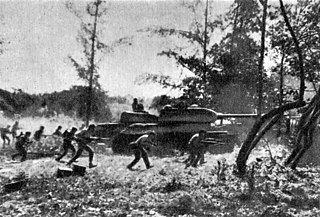
The Bay of Pigs Invasion was a failed military landing operation on the southwestern coast of Cuba in 1961 by Cuban Democratic Revolutionary Front (DRF), consisting of Cuban exiles who opposed Fidel Castro's Cuban Revolution, covertly financed and directed by the U.S. government. The operation took place at the height of the Cold War, and its failure influenced relations between Cuba, the United States, and the Soviet Union.

Santiago de Cuba is the second-largest city in Cuba and the capital city of Santiago de Cuba Province. It lies in the southeastern area of the island, some 870 km (540 mi) southeast of the Cuban capital of Havana.
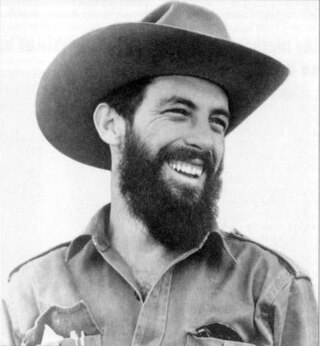
Camilo Cienfuegos Gorriarán was a Cuban revolutionary born in Havana. Along with Che Guevara, Fidel Castro, Juan Almeida Bosque, and Raúl Castro, he was a member of the 1956 Granma expedition, which launched Fidel Castro's armed insurgency against the government of Cuban dictator Fulgencio Batista. He became one of Castro's top guerrilla commanders, known as the "Hero of Yaguajay" after winning a key battle of the Cuban Revolution. His signature weapons were a M1921AC Thompson and a modified M2 carbine.

Osvaldo Dorticós Torrado was a Cuban politician who served as the president of Cuba from 1959 to 1976. He was a close ally of Cuban revolutionary and longtime leader Fidel Castro.
The Intelligence Directorate, commonly known as G2 and, until 1989, named Dirección General de Inteligencia (DGI), is the main state intelligence agency of the government of Cuba. The DI was founded in late 1961 by Cuba's Ministry of the Interior shortly after the Cuban Revolution. The DI is responsible for all foreign intelligence collection and comprises six divisions divided into two categories, which are the Operational Divisions and the Support Divisions.

The Ten Years' War, also known as the Great War and the War of '68, was part of Cuba's fight for independence from Spain. The uprising was led by Cuban-born planters and other wealthy natives. On 10 October 1868, sugar mill owner Carlos Manuel de Céspedes and his followers proclaimed independence, beginning the conflict. This was the first of three liberation wars that Cuba fought against Spain, the other two being the Little War (1879–1880) and the Cuban War of Independence (1895–1898). The final three months of the last conflict escalated with United States involvement, leading to the Spanish–American War.

Lt. General José Antonio de la Caridad Maceo y Grajales was second-in-command of the Cuban Army of Independence.
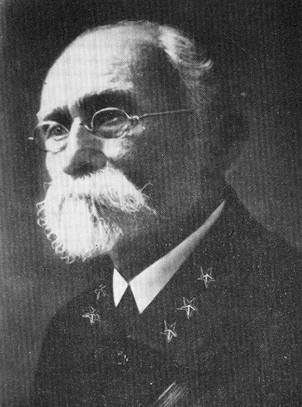
Máximo Gómez y Báez was a Dominican Generalissimo in Cuba's War of Independence (1895–1898). He was known for his controversial scorched-earth policy, which entailed dynamiting passenger trains and torching the Spanish loyalists' property and sugar plantations—including many owned by Americans. He greatly increased the efficacy of the attacks by torturing and killing not only Spanish soldiers, but also Spanish sympathizers and especially Cubans loyal to Spain. By the time the Spanish–American War broke out in April 1898, the rebellion was virtually defeated in most of Western Cuba, with only a few operating pockets in the center and the east. He refused to join forces with the Spanish in fighting off the United States, and he retired to the Quinta de los Molinos, a luxury villa outside of Havana after the war's end formerly used by captains generals as summer residence.
The Cuban Revolution was the overthrow of Fulgencio Batista's regime by the 26th of July Movement and the establishment of a new Cuban government led by Fidel Castro in 1959.
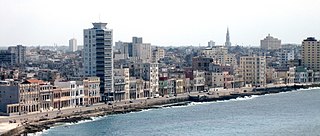
The Malecón is a broad esplanade, roadway, and seawall that stretches for 8 km along the coast in Havana, Cuba, from the mouth of Havana Harbor in Old Havana, along the north side of the Centro Habana neighborhood and the Vedado neighborhood, ending at the mouth of the Almendares River. New businesses are appearing on the esplanade due to economic reforms in Cuba that now allow Cubans to own private businesses.
The military history of Cuba begins with the island's conquest by the Spanish and its battles afterward to gain its independence. After the Communist takeover by Fidel Castro in 1959, Cuba became involved in many major conflicts of the Cold War in Africa and the Middle East, where it supported Marxist governments and fought against Western proxies. Castro's Cuba had some 39,000–40,000 military personnel abroad by the late 1970s, with the bulk of the forces in Sub-Saharan Africa but with some 1,365 stationed in the Middle East and North Africa. Cuban forces in Africa were mainly black and mulatto.

Havana Harbor is the port of Havana, the capital of Cuba, and it is the main port in Cuba. Other port cities in Cuba include Cienfuegos, Matanzas, Manzanillo, and Santiago de Cuba.
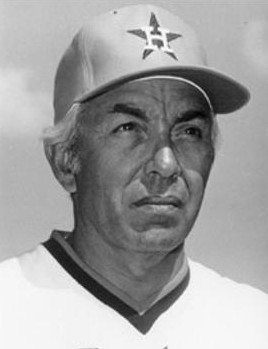
Antonio Aristides Pacheco was a Cuban-born coach and scout in Major League Baseball. A longtime minor league infielder and manager, Pacheco coached in MLB for six seasons for the Cleveland Indians and Houston Astros.

José Quintín Bandera Betancourt was a military leader of the Cuban insurrection against the Spanish during the Cuban War of Independence. In 1906, Bandera, led an army of insurgents toward Havana, and was killed near Punta Brava, a village close to Havana.

Barrio de San Lázaro is one of the first neighbourhoods in Havana, Cuba. It initially occupied the area bounded by Calle Infanta to the west, Calle Zanja to the south, Calle Belascoáin to the east, and the Gulf of Mexico to the north, forming the western edge of Centro Habana. According to the 1855 Ordenanzas Municipales of the city of Havana, Barrio San Lázaro was the Tercer Distrito and was Barrio No. 8.
The Camilo Cienfuegos Military Schools System are a type of boarding school in the Cuban Revolutionary Armed Forces. Founded 1966, it has 20 campuses in many cities, and is an official military high school. They provide pre-military training to students aged 11 to 17. They forge of more than 70% of officers and 50% of the generals and colonels in the FAR. It is named after Camilo Cienfuegos, a Cuban revolutionary who, along with Fidel Castro, Che Guevara, Juan Almeida Bosque, and Raúl Castro, took part in the 1956 Granma expedition. Unlike the Russian Suvorov Military Schools, they are co-educational, modeled on United States military high schools and preparatory pre-college institutes.














